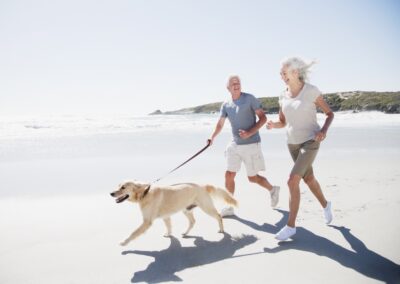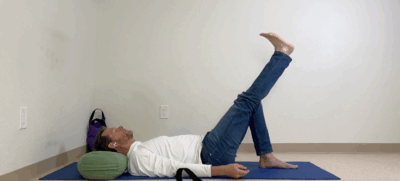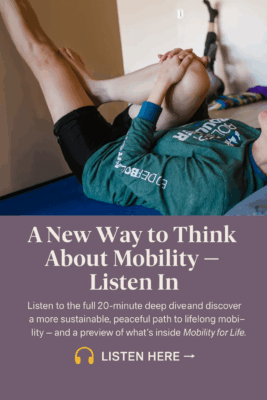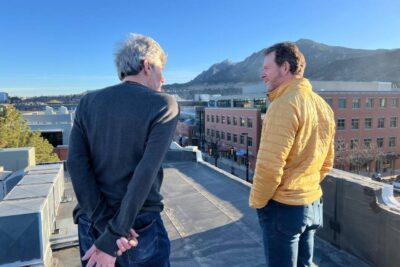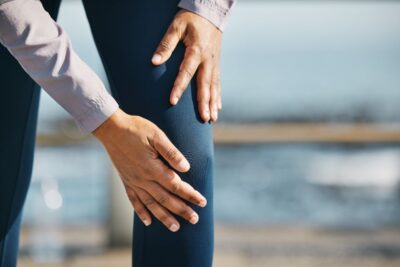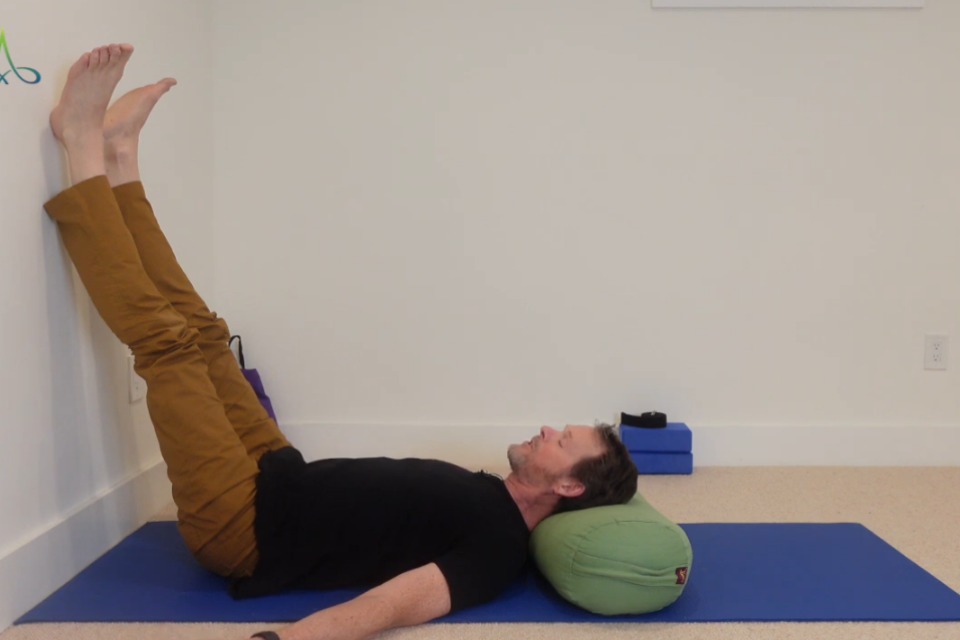 In this article, I want to discuss the powerful yoga shape “Legs Up the Wall.” It is prevalent in Avita Yoga, and we incorporate it into many shapes and movements. I have included it in my pre-recorded YouTube videos, but it deserves special attention because it is such a powerful shape.
In this article, I want to discuss the powerful yoga shape “Legs Up the Wall.” It is prevalent in Avita Yoga, and we incorporate it into many shapes and movements. I have included it in my pre-recorded YouTube videos, but it deserves special attention because it is such a powerful shape.
If you do not have wall space, I know it is premium in many households, but get creative and find a wall space. You can shut a door and rest your legs against it, or you can place your legs over the seat of a chair, on a sofa cushion, or even on an ottoman. Anything to get the legs up works because we reverse the effects of gravity on your lower extremities, especially the toes, the feet, and the knees. It is very cleansing for the tissues and the joints. Let’s go ahead and get started.
Getting into the shape
If you have a yoga mat, you can sit right at the edge of the yoga mat with one hip very close to the wall. Roll back and put your legs up at the same time. Support your head with a bolster or a firm cushion. If it is too much work to straighten the knees or if it takes effort to keep them straight, then scoot back slightly and allow gravity to have an effect through your knees, letting them extend passively without effort. You must be at least 10″ away from the wall.
- The knees should be straight without effort.
- The tailbone should rest on the floor.
- The goal is a passive impact with no effort.
The Benefits of Legs Up the Wall
Many other styles of yoga encourage you to be right up close to the wall with your torso at a 90-degree angle. This approach is completely different. We focus on joint health, and joints need both extension—when parts move further apart—and flexion, both passively and actively, to be healthy and functional. This is the full scope of this practice.
Rest your arms at your sides, close your eyes, and, for starters, you might feel a wave of peace coming over your body. If this shape is too demanding— even for athletic individuals such as avid cyclists and runners —they have a hard time with this shape, and don’t be surprised if you have to begin with your legs over a chair instead of up on the wall.
I even consider this an endurance “activity.” It is a passive shape, but you are building endurance to sustain the shape longer and longer to the point where people will often take a nap in this shape.
How great is it that you can nap and let the yoga work for you while you catch up on your sleep? It is truly amazing!
So, what about the shape? Why is it helpful? Well, first of all, the spine is now actually in extension. Considering how we walk and carry ourselves through life, the spine naturally has some degree of extension in this shape. The upper back extends.
The Lower Back Flexes
If you are far enough away from the wall, the tailbone has to be flat on the floor, encouraging the lower back to adapt to the floor, which is flexion of the lower back.
Circulatory Benefits
- Lower Fluid Pressure in the Feet and Legs: Elevating the feet induces pressure, so the pressure will be less in your feet. We are talking about the pressure that moves fluids, lymphatic fluid, and blood. It will be less in your feet and your toes, and there will be more pressure in the thoracic outlet and the shoulder girdle.
- Increased Blood Flow to the Brain and Glands: The shape encourages blood flow to the fingers and hands and to the many glands at the base of the neck and throat. We are going to push the blood around the brain.
- The heart has to work harder but not faster: The heart has to work a little harder to get the blood up to the toes. Imagine the subtle back pressure of blood against the heart. If you have a heart condition, check with your doctor before you do a shape like this. Imagine the challenge it puts on the heart to work a little harder but not faster.
Nervous System and Healing
- Stimulates the Vagal Response: The shape ultimately promotes relaxation. It stimulates the vagus nerve and the parasympathetic nervous system, helping us enter a deep relaxation response where healing occurs.
Great Yoga Position for Other Yoga Shapes
As I mentioned earlier, we sometimes perform movements in the shape, such as bringing the knee to the chest. This brings healing compression to the knee, encouraging synovial fluid to be expressed through the synovial membrane. The lymphatic system then picks up the fluid and cleanses it. You may spend a couple of minutes here.
Joint and Muscle Benefits
- Induces the Flow of Lymph: The hip joint is also compressed in this shape. Compression and elevation assist the lymphatic system in removing waste and toxins from the body.
- Compression and Release for Bones and Joints: Compression and release benefit muscles and joints. While incorporating strap work, we do not focus on stretching the muscles. Instead, we use the muscles to engage and support the joints, promoting mobility and overall joint health.
- Stabilizes the Sacroiliac (SI) Joint: I think of the shape as a reset for the sacroiliac joint. The sacroiliac joint connects the two prominent hip bones to the triangular bone called the sacrum, or tailbone, at the bottom of your spine. This joint is located on either side of the sacrum. Sometimes, one part of the joint can become “stuck,” so letting the weight of your legs come down into the back of the pelvis can help reset that area. Some yogis and gymnasts with a lot of flexibility develop excessive movement in this region, which can become painful if there is an SI joint issue. This is typically due to too much movement, and the goal is to stabilize the SI joint with many shapes and movements, including this one, where the joint is supported against the floor.
Now, let’s move to another version of the shape. Bend your knees, roll to one side, and push yourself up.
Variations with a Bolster
If you don’t have a bolster, you could use a dense cotton or wool blanket and fold it several times. We are looking for elevation from a couple of inches to about 6 or 8 inches.
- Sit closer to the wall and lie back, putting your legs up the same way.
- Bend your knees, press the feet into the wall, and raise your pelvis.
- Place the bolster under your pelvis (not your lower back).
- Extend the legs up.
Why does this help?
- Releases Hamstring Tension: Elevating the pelvis relieves pressure on the hamstrings. Because the pelvis is elevated, you might feel that your hamstrings are relaxed and supple.
- Encourages Flexion of the Lumbar Spine: Pressing the heels into the wall gently curves the lower back toward the floor, which can help alleviate sciatic and lower back pain.
- Takes Pressure Off the Nerves: This creates space in the vertebral column, encouraging blood and lymphatic circulation.
Additional Benefits
- Reduces Pressure on the Pelvic Floor: This position relieves pressure on the reproductive organs, including the prostate (for men) and the uterus and ovaries (for women).
- Supports the Cervical Spine: Incorporating gentle neck and head movements while in this shape increases circulation to the brain and revitalizes the cervical spine.
Closing the Practice
- Release your arms to your sides.
- Bend your knees
- Lift the hips and Remove the support.
- Slowly lower back down and extend the legs back up.
- Inch back if necessary to allow the knees to extend. Feel the benefits.
We don’t need all the science, evidence, or proof—a better experience, a better walk, or a better way through life should be enough.
When you are ready:
- Bend the knees
- Roll onto one side
- Push yourself up and enjoy your day.
Final Thoughts
“Legs Up the Wall” is not just another yoga shape—it’s a transformative practice that supports restoration, enhances circulation, and promotes overall well-being.
This simple yet powerful shape significantly benefits the joints, muscles, nervous system, and heart health.
Try incorporating “Legs Up the Wall” into your routine and see how it transforms your movement and elevates your overall health.
